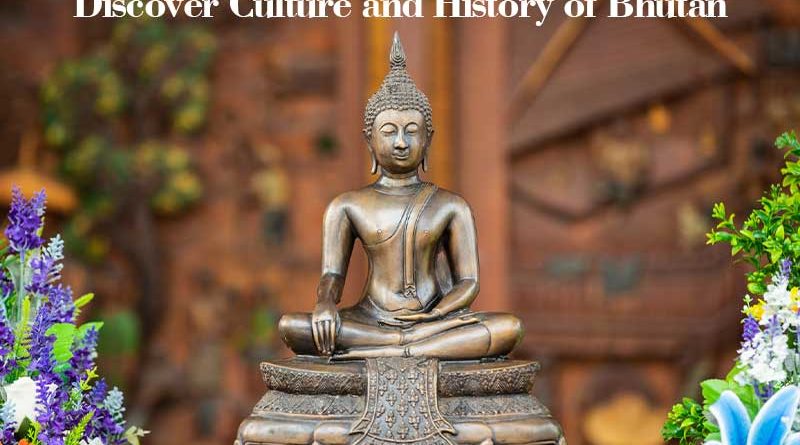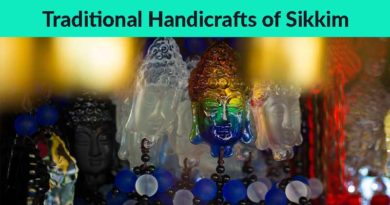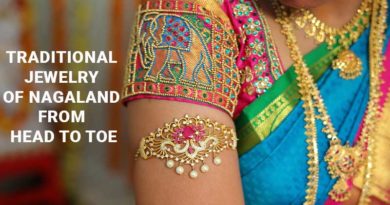Tourist Attractions in Bhutan: Discover Culture and History of this Region
Bhutan or The Kingdom of Bhutan is one of the smallest and most beautiful countries in the world. This serene place of Holy Monasteries fascinates every person who comes across it. The Rocky Mountains, flourishing green valleys, and clean and tidy rivers attract everyone’s attention.
And the best part is that both the people and government of Bhutan have determined to preserve its beauty and culture and promote it. You can see the essence of Bhutan’s cultural values in every corner of the country.
Surprisingly, this is the only country where Gross National Happiness is considered above the Gross National Product. This Buddhist Kingdom is ruled by the young king Jigme Khesar Namgyel Wangchuk and the theory of Happiness was introduced by the father of the King. Bhutan is the only country that measures its habitant’s happiness and this experiment is quite successful and admired in the world.
Story of Name “Bhutan”
For many centuries, the world does not have any name for Bhutan. In the 18th century, Tibetan chroniclers called it “Hidden Holy Land”, “Lotus Garden of the Gods” and the “Southern Valley of Medicinal Herbs”.
But, the Bhutanese have had the name of their devoutly land. The original and official name of Bhutan is Druk-Yul – which means “Land of the Thunder Dragon”. The current known name “Bhutan” is given by the British Authorities which is used for official international business references.
In ancient centuries when this land was a part of the Indian Continent, it was known as “Bhotania” – which means “End of the Bhot’s Land” (Tibet). After Buddha, Mongol, and British influence for centuries, Bhutan was the first sub-continent to gain freedom after India.
Language
The national and official language of Bhutan is Dzongkha and Tibetan alphabets are used in writing. Their textbooks are written in the official language. However, 20 different languages and dialects are spoken here due to the separate settlements on mountain terrains.
English is generally understood as it is used in schools to communicate and Hindi and Nepali languages are widely spoken here.
Symbol
The national symbol of Bhutan is a circle that shows two dragons, a lotus, and two double diamond thunderbolts, along with jewels. Every symbol in the emblem has a meaning that represents Bhutan. The two dragons represent the original name of Bhutan, lotus means purity, two thunderbolts show a harmony between secular and religious powers, and the jewel represents the sovereign power.
The national flag is divided diagonally into two colors – golden yellow on the top representing the secular power of the king and orange color in the lower part representing the Buddhist religion. It also has a white dragon across the middle that holds jewels in its claws.
The national bird is the Raven that adorns the royal hat as well and the national animal is the takin which is a rare mammal and lives in high areas and eats bamboo. The national tree is Cypress which can grow in any soil and the national flower is Blue Poppy which grows in high altitudes only.
Religion
Predominantly, Buddhism is the religion of Bhutan followed by Hinduism. Mahayana Buddhism is the official religion of Bhutan. Mainly, 75% of the total population is Buddhist, and the remaining 25% are Hindu. They respect their Gods and Deities a lot and live by their religious values.
You can find the colorful flags on the hillsides and at the entrance of the Monasteries because they are considered sacred flags. Monasteries with combinations of the fortress are present in every district of Bhutan.
Most of the Monasteries are located high in the mountains and Buddhist Monks live there leading a very simple life with no high-end luxury. Generally, the monks are admitted to Monasteries at the age of 6 to 9 and start getting their lessons under teaching authorities. The religion of Bhutan plays an important role in deciding the cultural and moral values and lifestyles of the people.
Culture
The culture of Bhutan is very much influenced by Buddhist Values and is based on Mahayana Buddhism. The rich heritage of the country is evidence of how the Bhutanese have isolated their country from the outside world and preserved and protected it. The unspoiled and spectacular natural beauty, its colorful traditions, and the uniqueness of its culture are the main attractions.
As the law of culture, Bhutanese have to wear the national costume in public places and government offices and during national and religious functions. In Bhutan, the etiquette and standards of Clothing, Eating, Respect, Speech, Religion, and Social/Moral Values are responsibly maintained by the ministry of the government.
The teachings of Buddha are preserved by a charitable institution since 2002 to continue the legacy for the next generations. Archery and Digor are national sports that are firmly rooted in the culture of the country.
Festivals
Bhutan is quite festive and its festivals are an integral part of its culture. The widely known Bhutanese festival is Tshechu and its celebration lasts for 3-5 days. During this festival, the people gather together to be a part of this mass celebration. Bhutanese people follow the Lunar Calendar and this festival is celebrated on a particular day of a Month.
The masked dancers are the major attraction of this festival and everyone including the monk wears silk robes and animal masks. In this dance, they re-enact the life moments of Guru Rinpoche. And on the last day of this festival, they unfurl the silk thongdrel and the people of Bhutan believe that when they see the thongdrel, their sins will wash away.
Music and Dance
The music and dance forms of Bhutan are inspired strongly by its religion. At every festival and celebration in Bhutan, they perform traditional dance and singing. Masked and Chham Dances are the national dance forms and during singing, a person plays a musical instrument that adds melody to the dance and keeps a time track. This instrument is known as a symbol.
The whole country celebrates annual events such as Tshechu and King’s Birthday and re-enacts the life moments of Guru Rinpoche and celebrates the legacy by dancing and singing traditionally. The dance from Chham has varieties like Joenpa Legso, Pa Chham, Drametse Nga Chham, and among royalty; the dance form Zhungdra is the most popular of all.
Dress
The cultural aesthetics of Bhutan are very strong and you can see that in their traditional dresses. It is mandatory to wear traditional dresses in government offices and on special cultural occasions. Kira is the traditional dress for women which is an ankle-length dress worn with short jackets on the top and Gho is for men which is a heavy knee-length robe tied with a belt on the waist.
Additionally, carrying a scarf over a traditional dress is compulsory when you enter any government office. A women’s scarf is known as Rachu and Men’s scarf is known as Kabney.
Generally, these dresses are made of wool and cotton as per season and made out of silk to wear on special occasions. However, the traditional dresses are changed over time. Earlier, small pouches were made to carry food bowls and daggers and now these dresses have pockets for mobile phones and to keep the money.
Jewelry
Women of Bhutan like and prefer jewelry that is made of silver and gold. The jewelry traditions are very much like India. Bhutanese women wear all their heavy jewelry on most religious and social occasions and look at their finest.
The popular ornaments for women in Bhutan are heavy bracelets, fasteners attached to the Kira, loop earrings with opaque mineral stone, heavy necklaces with gemstones, coral beads, and Zhi stone jewelry. Silver Buckles of swords and ceremonial belts made of gold and silver are popular jewelry items for men in Bhutan.
The Zhi stone is an agate made into beads and has black and white spiral designs that are popularly called “Eyes” and is said to have protective powers. This stone is considered a luxurious possession of ornaments in Bhutan.
There is a large government-run handicraft emporium that makes traditional jewelry and antique jewelry. The making of traditional jewelry is known as Troe-Ko and its products are widely used by Bhutanese women. It is not prolific to make Bhutanese jewelry.
The master craftsman of traditional jewelry use precious stones and metals like gold, silver, corals, and turquoise and make rings, earring, bangles, brooches, necklace, pendants, and amulets for ritual objects and much more. Good fortune symbols are engraved in traditional motifs.
In Bhutan, traditional ornamentation is a highly prized family heirloom.
Food & Drinks
The simplicity of Bhutanese culture is also seen in its food. Ema Datshi is the national dish of Bhutan and traditionally, it is made in earthenware and eaten with bare hands by sitting cross-legged on the wooden floor. It is made of rice, dried pork, or beef, with spicy chilies cooked with soft white cheese and eaten in almost every meal of the day in every part of the country.
Momos are the second most popular Bhutanese Delicacy stuffed with Beef, Pork, and Cabbage for vegetarians. Northern Indian dishes mixed with chilies are often eaten in every meal in Bhutan. Fruits, vegetables, and ground spices are cooked with chicken, pork, beef, and dried yak that resemble Indian and Chinese cuisines.
Tea is very popular and is served in a variety of ways throughout Bhutan. Suja or salted butter tea is served on special occasions in Bhutan. It is recommended to avoid ice in any beverage and drinks only bottled water. And when it comes to alcohol, Ara is the traditional drink distilled from rice, wheat, maize, and barley. Beer is also popular in Bhutan.
However, with the advancements in education and the influence of modern culture, dining table and cutlery is used in the cities and use modern utensils to cook the dishes. And when the family sat together to have food, usually the woman especially the mother serves the food to all starting with the eldest member of the family.
To Sum Up
So this informative article helps you explore the History and Culture of Bhutan along with national symbols, language, food, jewelry, dress, music, and festivals. We hope that this interesting piece of knowledge will add to your interest in Bhutanese culture.
For more informative articles, keep reading with us. We aim to bring you the information that helps you grow and make things a bit easy!!



